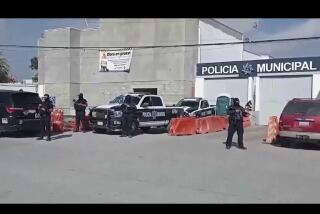After Isabel, Annapolis Not Quite Ready for White Glove Inspection
Not far from where custom-made 44-foot sloops named Fearless, Valiant, Dauntless and Resolute float in the sun-dappled waters of the Severn River, the U.S. Naval Academy looks anything but shipshape.
The doors to stately but dark academic buildings are propped open by sandbags. Huge trash bins are piled high with silt-covered chairs, filing cabinets and desks. The loud hum of generators fills the air and, along the eastern wall of Rickover Hall, about 4 feet above ground, a distinct waterline marks the normally spotless windows.
Like hundreds of thousands of schools, businesses, shops and homes along the mid-Atlantic, the Naval Academy has been working for six days to recover from Hurricane Isabel.
Nearly a week after the storm roared through the region, more than 600,000 customers remained without power, according to local electric utilities.
Pepco, which serves the District of Columbia and many of its Maryland suburbs, came in for particular criticism. Nearly 10% of its customers were still in the dark Wednesday, and local governmental officials were asking why.
Public schools in the District of Columbia and many of its suburbs reopened Tuesday after being closed for three days. Many districts have already used up the cushion built into their school calendars in the event that bad weather -- usually snow -- forces them to close.
Isabel’s deluge -- and another, far less violent but equally rainy storm Monday night and Tuesday morning -- came on top of an already soggy first eight months of the year. With 48 inches of rain already this year, Washington is on course to break its rainfall record of 61 inches set in 1889.
Here in Annapolis, about 25 miles east of Washington where the Severn spills into Chesapeake Bay, storms are as much a part of life as are Maryland’s famous crab cakes.
“We were prepared for rain and wind,” Mianna S. Jopp, manager of the academy’s visitor center, said Wednesday.
But no one was prepared for the 7 1/2-foot storm surge that crashed over a seawall and inundated much of the 158-year-old academy’s picturesque “yard,” as the campus is called.
The visitor center received only an inch of the “black -- not brown -- water,” Jopp said between discussions with the contractors, who will replace its carpet and hardwood floors.
But on the other side of the yard, where only a soccer field and a running track separate some of the academy’s largest buildings from the Severn, 3 or 4 feet of the sewage- and petroleum-tainted water coursed through engineering and chemistry laboratories.
When the surge hit, about midnight Sept. 18, the academy’s 4,000 midshipmen were safe on the top five floors of massive Bancroft Hall.
But the bottom floor -- home to the post office and some utilities and support services -- was flooded.
The basements or bottom floors of the dining hall, athletic facilities, other academic buildings and several homes occupied by military personnel also took on water.
Outside, water covered much of the yard.
“When we woke up [Friday] and looked outside, everything was under water,” said a plebe, as the first-year midshipmen are known, who had interrupted his daily run to inspect the wreckage of two sunken sailboats on the other side of the academy’s seawall.
“It was like an island.”
That first post-Isabel day was anything but normal for the academy. Classes were canceled and midshipmen were put to work cleaning up storm debris.
“Four thousand people go a long way,” said Cmdr. Rod Gibbons, a spokesman for the academy.
By Monday, about half the classes were in session; now, most of them have reconvened -- although many are being held in makeshift classrooms. “We’re holding class just about anyplace we can put a professor and a bunch of mids,” Gibbons said.
The academy teaches more engineering courses than anything else, so “losing your labs really hurts,” he said.
Restoration of the massive engineering and chemistry labs -- the basement of Rickover Hall alone covers 125,000 square feet -- “will be measured in months,” Gibbons predicted.
The cost of the damage is expected to run in the tens of millions of dollars.
Already, the normally quiet and neatly manicured campus is crawling with maintenance workers and construction trucks.
Entire buildings, blocked off with yellow tape, sit dark and empty. Sidewalks are littered with gasoline containers, motor oil canisters and extension cords.
But on a cloudless, fall afternoon, academy life moves on.
Plebes run their daily miles in white T-shirts and navy-blue shorts, the football team runs drills, and midshipmen head for the bay on those custom-made sloops.
“We’re used to challenges and overcoming adversity,” said Gibbons. At the visitor center, Jopp wanted to send the same message.
“People are calling to see when we’ll start tours again,” she said, standing in front of a “Don’t Tread on Me” flag. “We’re open. We’re up and running. We’re dealing with it.”
*
Times staff writers Elizabeth Shogren and Shweta Govindarajan contributed to this story.
More to Read
Start your day right
Sign up for Essential California for news, features and recommendations from the L.A. Times and beyond in your inbox six days a week.
You may occasionally receive promotional content from the Los Angeles Times.






